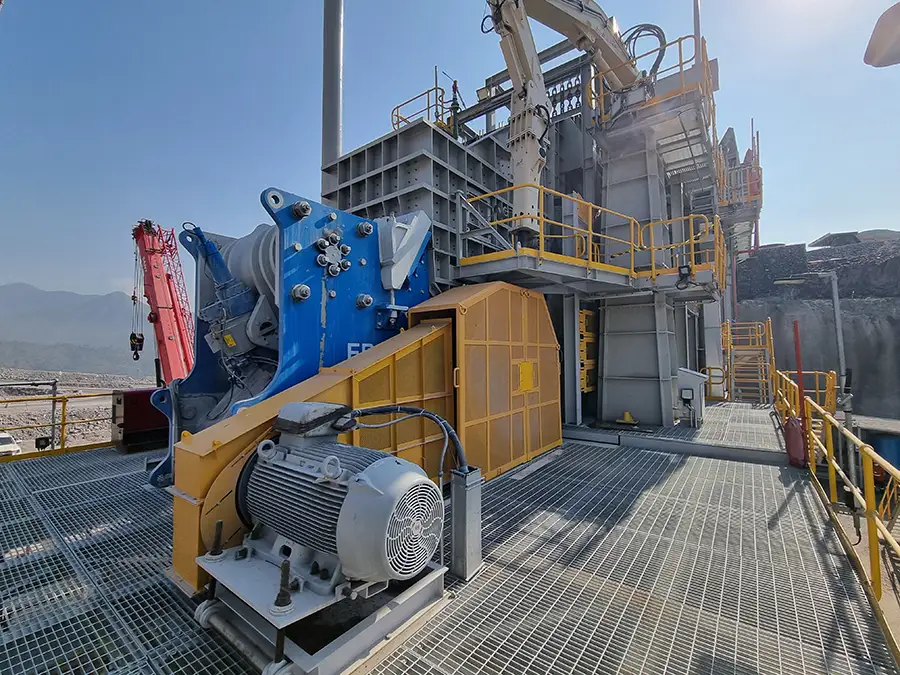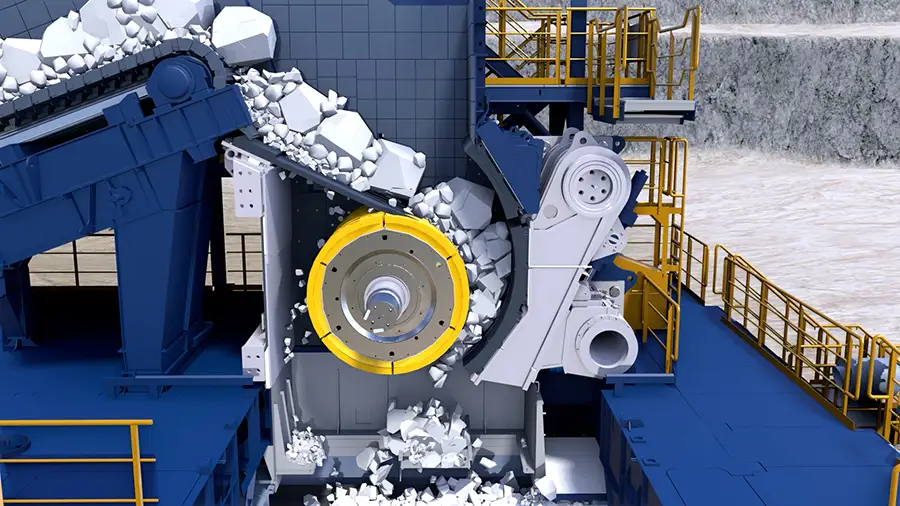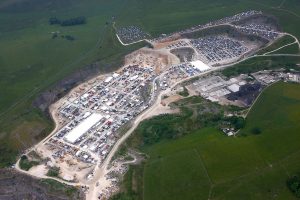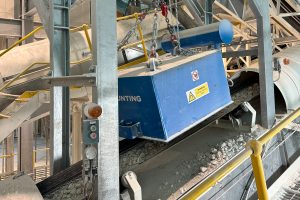As the first step in processing, primary crushing has a dramatic effect on overall production and ultimately the profitability of a quarry or mine in the long term. To help quarries and mines optimise their operations, FLSmidth has developed its ERC, a groundbreaking solution for the primary crushing of hard rock. The initial four-model range offers capacities from 550 to 7 000 tonnes per hour (tph).
Ideally suited for use in both underground and surface operations, the ERC is said to offer significantly higher efficiency and flexibility than any conventional crushers in the processing of hard rock. With its numerous benefits compared with conventional crushers, the ERC solves several problems that often occur in the first crushing stage.
Demitri Kokoroyanis, regional product line manager – Crushing & Screening, Sub-Saharan Africa, Middle East & South Asia Region (SSAMESA) at FLSmidth, tells Quarrying Africa that the ERC fits in between large jaw crushers and small to medium gyratory crushers, which are both proven solutions for hard rock applications.
However, jaw and gyratory crushers require large installation heights, something that the ERC addresses with its lower construction height. The ERC patented crushing technology is significantly more compact than alternative primary crushing systems, making it ideal for mobile and semi-mobile in-pit crushing applications.
FLSmidth has already seen a great deal of interest from the mining industry, confirms Kokoroyanis. The company has sold several units in the market over the past four years, with some being installed in Laos, Asia, and others, it is hoped, soon in Angola.
“We also have clients who have expressed interest in this technology for underground applications, and hopefully the projects will soon gain traction and turn this interest into commercial deals,” he says.

Operating concept
Because of its nature, primary crushing of hard rock can quickly lead to high wear and ultimately performance losses on the crushing equipment. To address this, the ERC’s roll is mounted eccentrically between the crushing chamber and the integrated screening chamber where the majority of the fines content of the feed material is screened out prior to the crushing chamber. This increases wear resistance, improves efficiency and achieves optimised crushing.
Fines are screened out by means of an integrated grizzly and bypassed through the crusher housing. The coarse particles are transferred into the crushing chamber. The eccentric shaft of the roll is axially guided by two sets of roller bearings and supported in the housing. The rotation of the drive motor is transmitted via a V-belt drive to the eccentric shaft. The inertia of the two flywheels accumulates crushing energy.
The rotating eccentric shaft generates the oscillating motion of the roll. Consequently, the crushing gap between the roll and the jaw in the crusher housing changes continuously. The coarser feed material is continuously crushed between the roll and the jaw as it falls by gravitation until it exits the crushing chamber at the bottom.

Benefits abound
One of the key design features of the ERC is the compact, yet robust nature of the crusher. “Due to its low profile, the ERC is particularly compact and robust, offering a lower construction height up to 50% lower than other hard rock primary crushers. The compact design and a smaller number of components simplifies transportation, installation and maintenance, while reducing CAPEX costs by up to 10%,” explains Kokoroyanis.
Another prime design feature of the ERC is its crushing geometry with an integrated pre-screen. The integrated grizzly allows for efficient bypassing of fines, thus boosting crusher capacity, as well as reducing energy consumption by up to 40% and increasing liner life in the process. Bypassing fines also reduces the risk of compacting and overloading of the crushing chamber.

“The innovative design with an integrated screen permits capacities of up to 7 000 tonnes per hour, representing up to 10% higher throughput at same product size compared to industrial benchmarks,” explains Kokoroyanis. “Large rocks are fractured at the opening of the jaw and three stages of crushing are executed as the material moves down the crushing chamber.”
Energy costs in the quarrying and mining industry are a significant portion of the overall annual spend. With the ERC crushing principle, quarry owners and mining houses can take back control of their energy spend. A particularly effective kinematic of the oscillating roll with constant stroke in the entire crusher cavity allows for a higher reduction ratio and more effective use of crushing energy. The reduction ratio of 1:10 potentially allows for elimination of secondary crushing stages, depending on the material’s characteristics.
In addition, the high moment of inertia of the roll and flywheels, says Kokoroyanis, contributes to accumulated crushing energy, reducing the power requirements and effectively compensating load peaks.
The ERC features an integrated automatic gap adjustment system. The ERC hydroset is a smart way of equipment protection and flexible machine setting. The patented, fully hydraulic gap setting/retraction system for the jaw offers a wide range of gap setting options for safe and simple adjustment of product size, compensation of liner wear and release of tramp material or otherwise uncrushable material content.
“As part of the crushing chamber, the adjustable swing jaw enables the gap to be specifically adapted to suit a required product,” says Kokoroyanis. “The adjustment range of up to 220 mm is sufficient to offset wear on the crushing elements.”
The symmetrical arrangement of the roll allows the crusher to be balanced with great precision, thus significantly reducing machine vibrations and loads on surrounding structures, making the crusher ideal for mobile and semi-mobile crushing systems.
“Another special feature of the ERC is its ability to be deployed in underground applications, which place high demands on crushing technology in terms of compactness, mobility and maintenance-friendliness. The combination of the ERC’s features and benefits make it ideal for meeting these demands,” concludes Kokoroyanis.





![Data from the World Risk Poll shows that one in five (21%) people in mining and quarrying occupations have experienced harm at work in the past two years. [Photo by Shane McLendon on Unsplash]](https://quarryingafrica.com/wp-content/uploads/2024/10/shane-mclendon-89hUOLtVfoI-unsplash-300x225.jpg)
